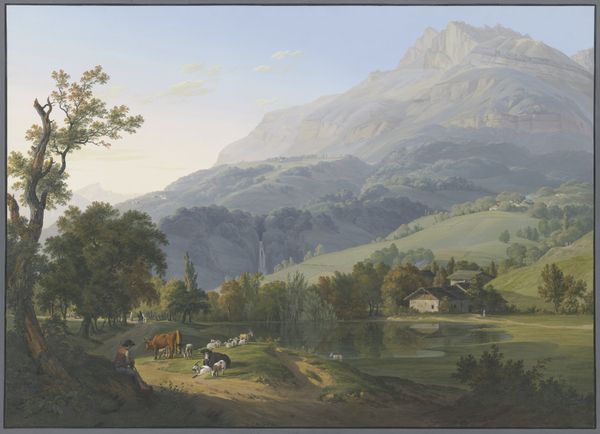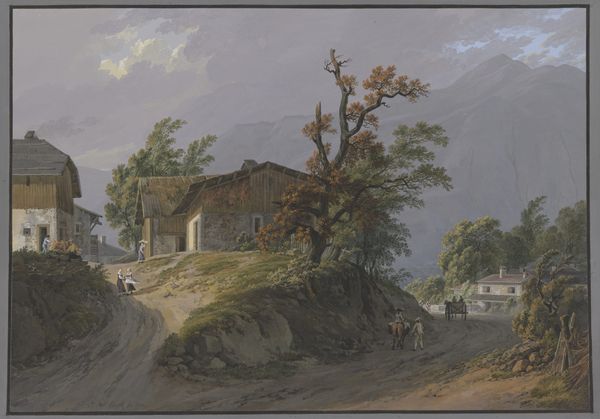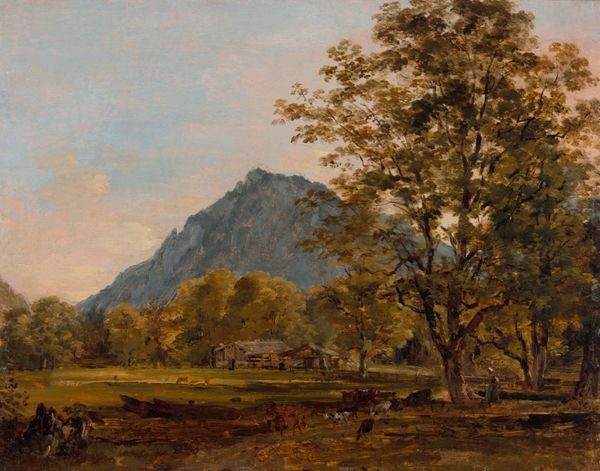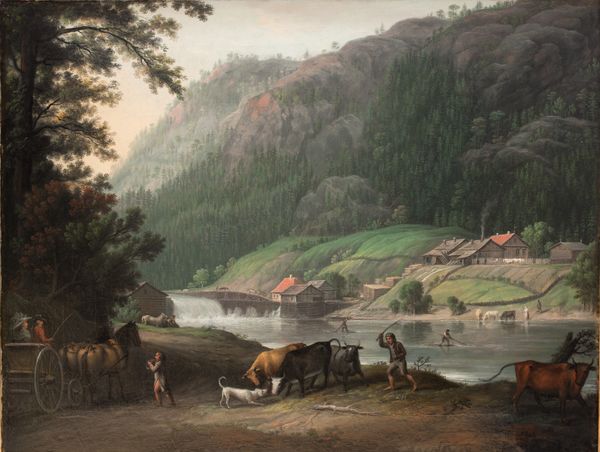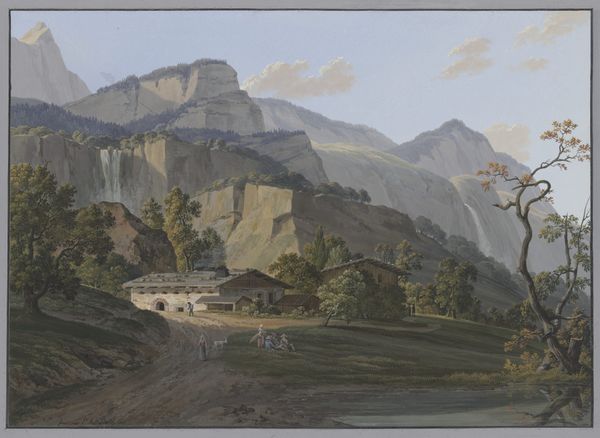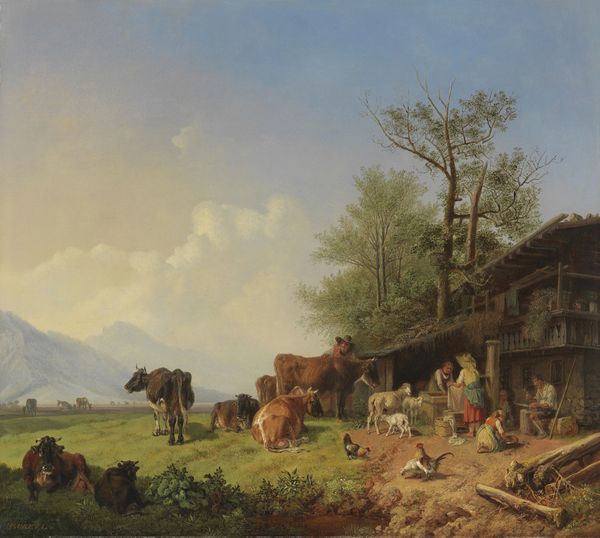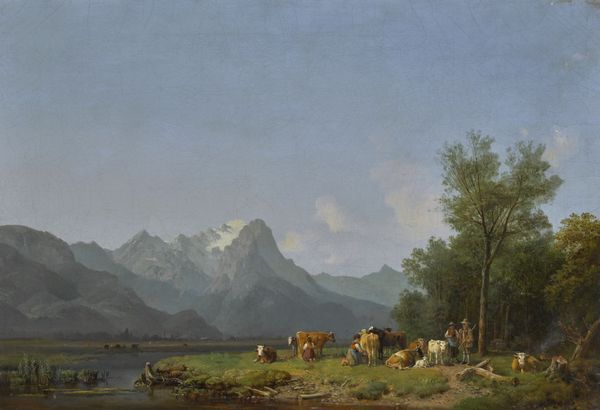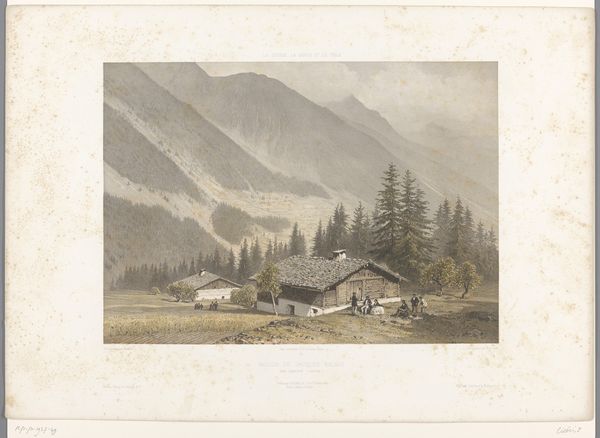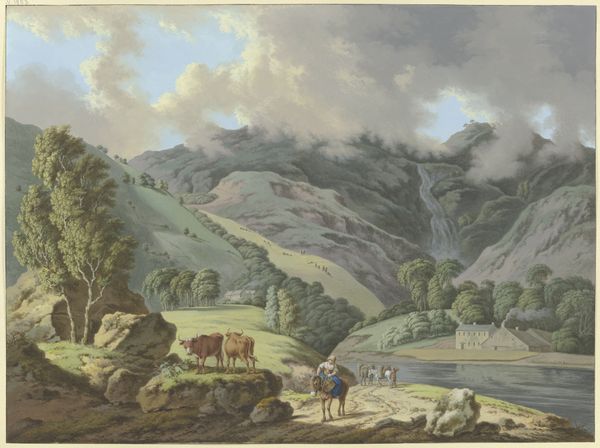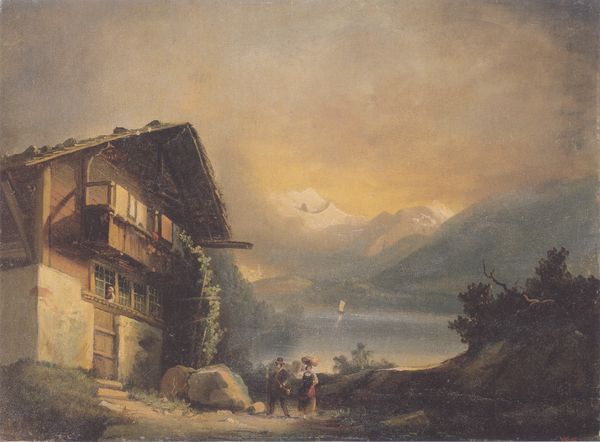
drawing, paper, watercolor
#
drawing
#
neoclacissism
#
landscape
#
paper
#
watercolor
#
swiss
#
watercolour illustration
#
genre-painting
#
watercolor
Copyright: Public Domain
Editor: This is "Vue du Brezon, pris près de Bonneville," a watercolor and ink drawing on paper created by Jean-Antoine Linck in 1806. There's something so serene and meticulously rendered about this landscape – it almost feels like a stage set. What strikes you most about it? Curator: It's fascinating to see how Linck frames this rural scene. Given its Neoclassical context, the pursuit of idealised form resonates with the art world. Notice how the landscape isn't just a backdrop but a stage for social and economic life. We see figures engaged in everyday activities: herding cattle, drawing water. How does this depiction of rural life connect with the broader cultural trends of the early 19th century? Editor: That makes me think about the romanticized view of the countryside during that era, a kind of yearning for simpler times perhaps? But wouldn't this idealization gloss over the realities of rural life for many people? Curator: Precisely. The rise of Neoclassicism coincides with significant social upheaval. The French Revolution had just happened, and there was growing interest in social reform and a turn toward idealized forms and moral messages. This image is carefully crafted, omitting hardship. To what extent do you think art like this contributes to shaping a certain narrative about the countryside for urban audiences? Editor: I see your point. By showcasing only the picturesque and the industrious, Linck seems to reinforce a vision of rural harmony that perhaps served the interests of the elite. It downplays potential social unrest or the economic struggles of rural communities. Curator: Absolutely. The Städel Museum as a public institution, by collecting and exhibiting this work, participates in the ongoing conversation about our shared history and social values, prompting reflection. How does considering this context affect your initial serene reading of the piece? Editor: It definitely complicates it. The idyllic surface now has a layer of socio-political commentary that makes it more intriguing, but also a little unsettling. Thanks for sharing these historical observations. Curator: My pleasure! It’s through these conversations that we can appreciate the power of art to reflect, reinforce, or challenge prevailing social and political norms.
Comments
No comments
Be the first to comment and join the conversation on the ultimate creative platform.
